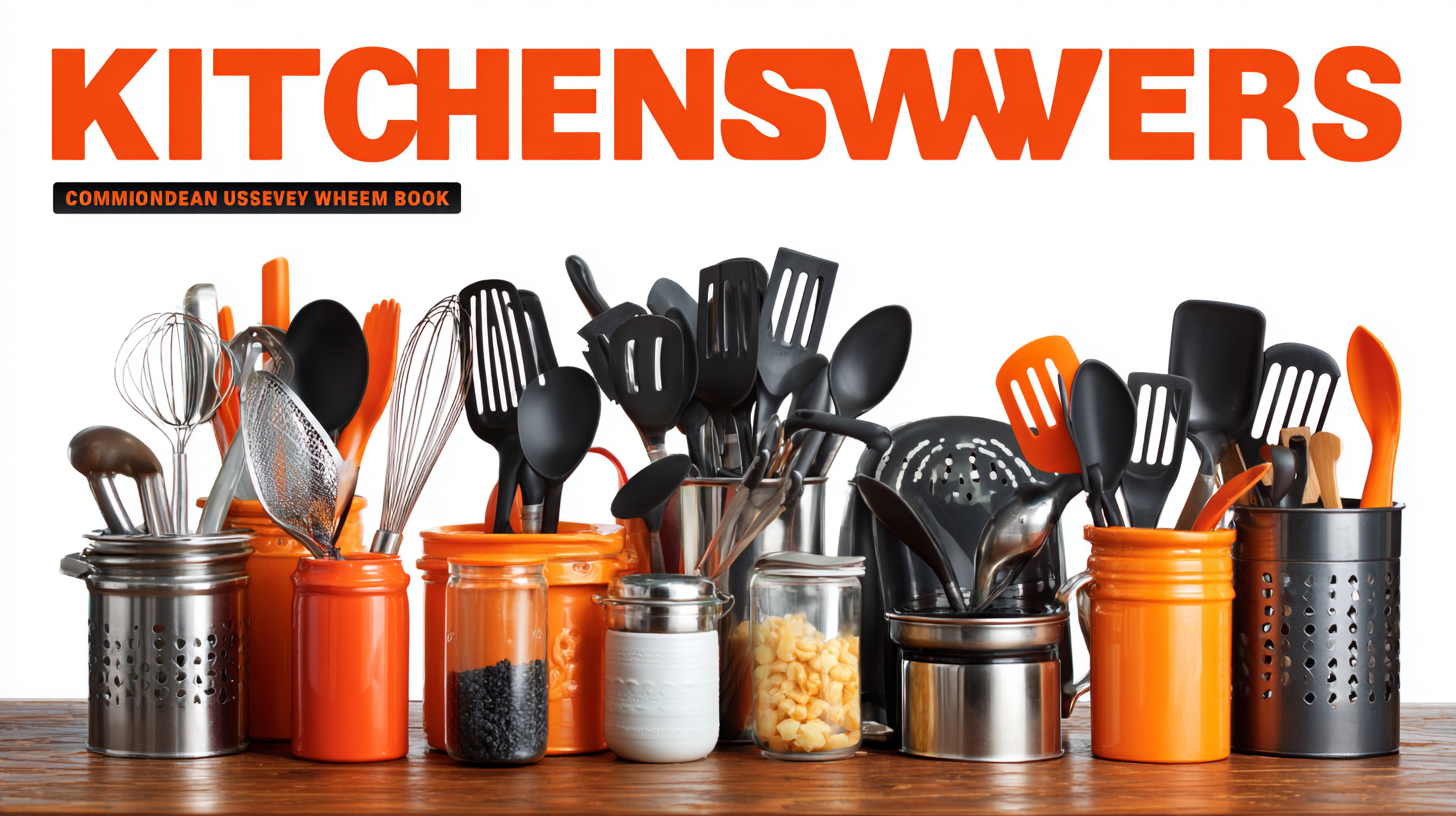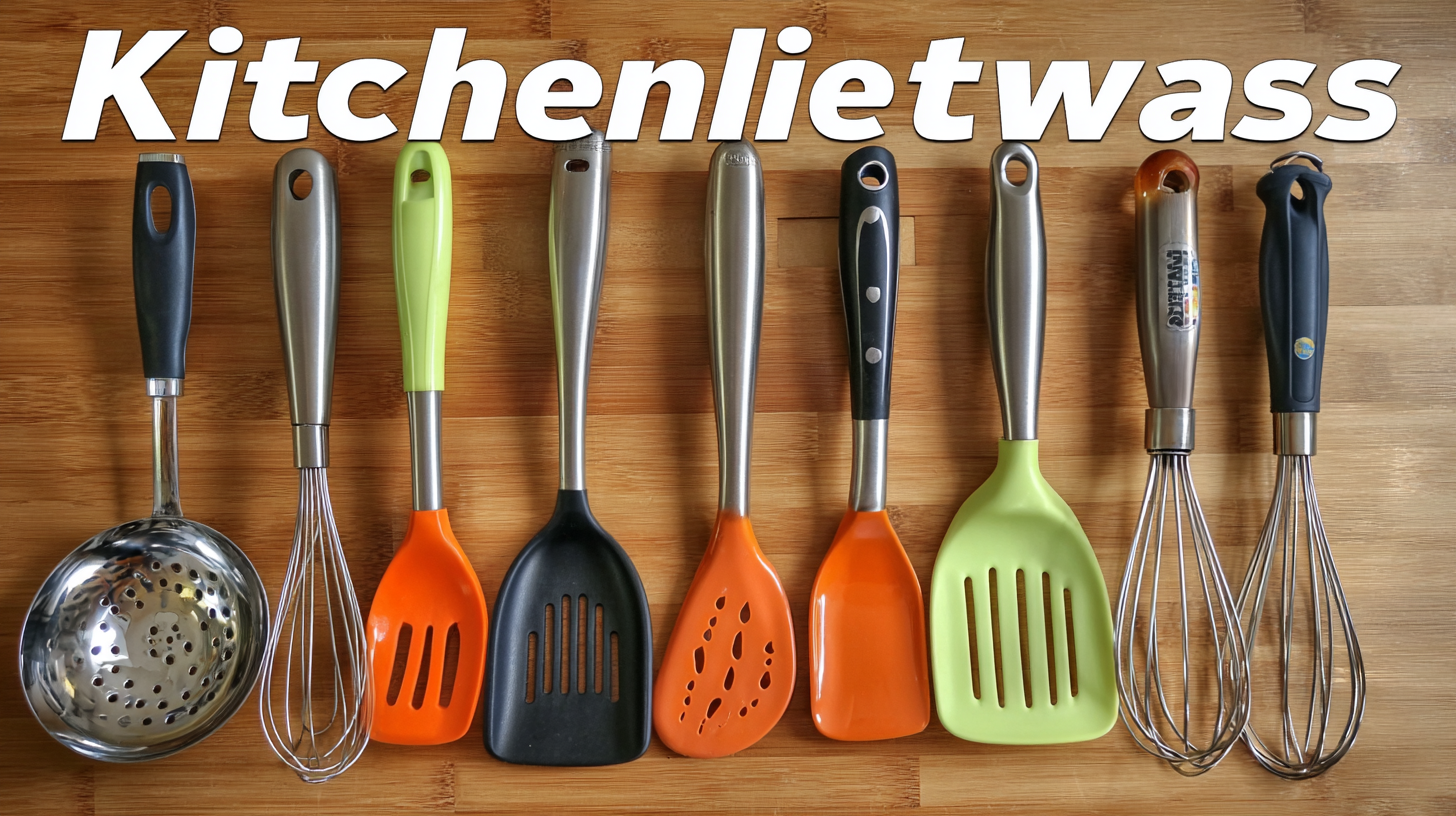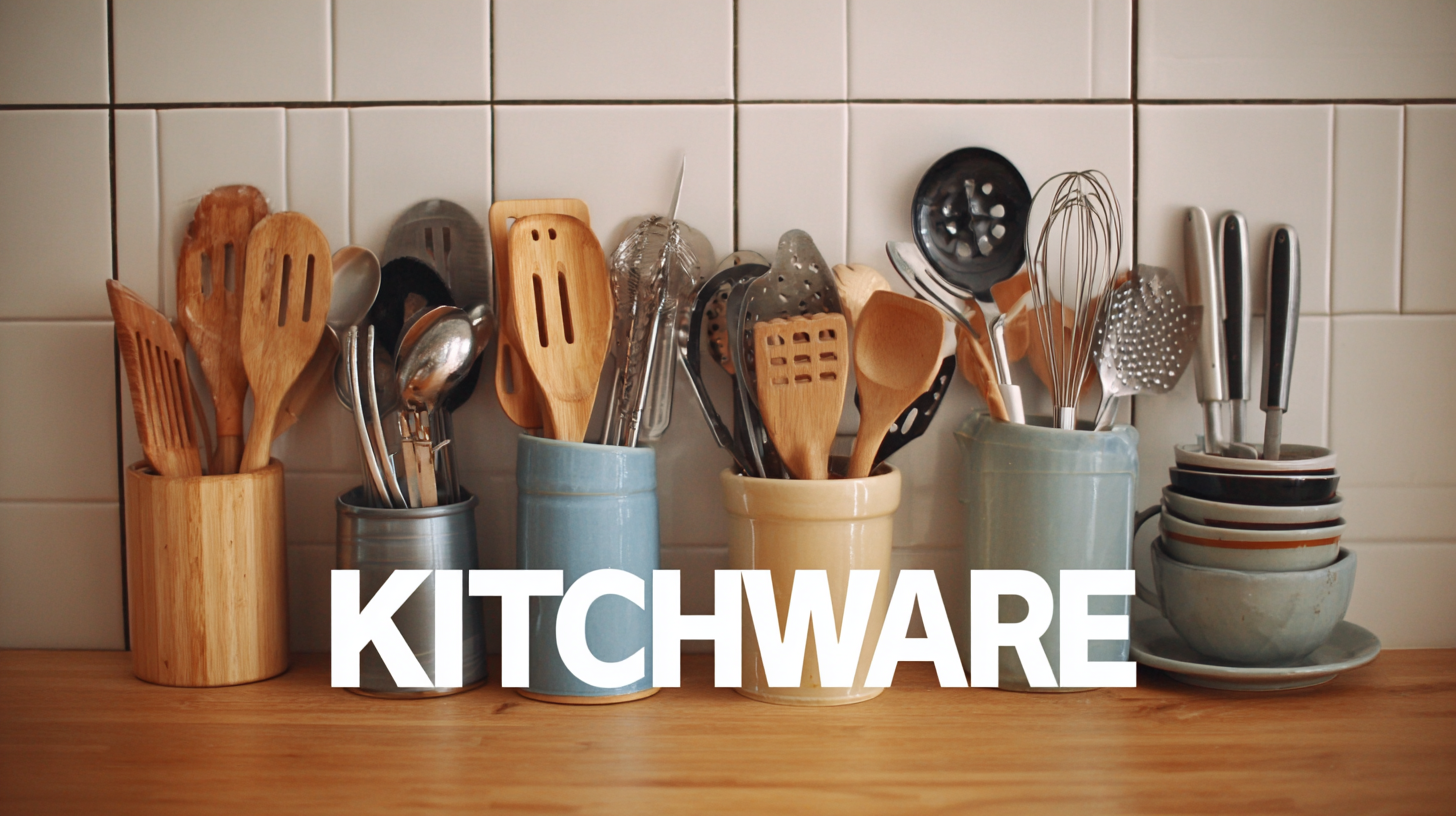Welcome to this website!

The kitchen is often termed the heart of the home, and the efficiency of this essential space significantly hinges on the quality of kitchenware utensils used. A recent industry report by Grand View Research projected that the global kitchenware market is expected to reach $42.8 billion by 2025, fueled by an increasing trend in home cooking and culinary innovation. However, despite the growth and variety of kitchenware available, many home cooks encounter common issues with these utensils that can hinder their cooking experience. From materials that struggle to withstand high temperatures to designs that do not facilitate ease of use, understanding these challenges is crucial for optimizing kitchen performance. In this blog, we will explore the prevalent issues with kitchenware utensils, the latest technological advancements in the field, and the benefits of selecting the right tools to enhance your culinary endeavors in 2025 and beyond.

When it comes to kitchenware utensils, understanding warranty benefits can significantly impact your cooking experience and investment. Many brands offer warranties to safeguard against defects in materials and workmanship, providing peace of mind for home cooks. For instance, some reputable cookware brands promise lifetime warranties, though pursuing a claim can sometimes be a hassle. Consumers should be prepared to navigate the fine print to ensure their investment is truly protected, as some brands are known for having stringent requirements when claims are made.

Choosing the right kitchen utensils doesn't just involve assessing quality; understanding warranty options is essential to avoid future frustrations. Products that come with robust guarantees can save money in the long run, especially if a favorite piece of cookware fails. Home cooks should research warranty coverage and customer service experiences related to various brands, as these factors can significantly influence satisfaction with the cookware. Ultimately, knowing what to expect in terms of warranty benefits can lead to more informed purchasing decisions, enhancing both the cooking experience and the longevity of kitchenware.
When it comes to kitchenware utensils, common issues can arise that every home cook should be aware of. One of the major problems often encountered is wear and tear, which can lead to the necessity of repairs or replacements. For example, wooden utensils may splinter or become discolored over time, while non-stick pans can lose their coating. Understanding the repair costs associated with these issues can help you make informed decisions.
Tips: Regular maintenance can extend the lifespan of your kitchenware. For wooden utensils, a simple oil treatment can prevent drying and cracking. For non-stick pans, using silicone or wooden utensils during cooking will help preserve the coating. If a utensil or appliance is damaged, consider repair options first; sometimes, a small fix can save you the cost of a replacement.
Additionally, it’s essential to keep track of warranties and service options. Many kitchenware brands offer warranties that may cover certain types of damage. Knowing the lifespan and maintenance needs of your kitchen items will enable you to budget for repairs and replacements effectively. Investing in quality pieces initially can also reduce long-term costs, ensuring your cooking experience remains enjoyable and efficient.
| Utensil Type | Common Issue | Estimated Repair Cost | Preventive Measure |
|---|---|---|---|
| Wooden Spoon | Cracked or Splintered | $10 - $15 | Regularly oil to maintain moisture |
| Chef Knife | Dull Blade | $5 - $20 (sharpening service) | Use a cutting board |
| Non-stick Pan | Scratched Surface | $15 - $40 (replacement) | Use silicone or wooden utensils |
| Blender | Leaking Base | $20 - $50 | Keep it dry and clean |
| Cutting Board | Warping or Cracking | $10 - $30 | Avoid soaking and excessive heat |
When it comes to ensuring your kitchenware withstands the rigors of daily cooking, understanding maintenance needs is essential. Stainless steel cookware, for instance, is celebrated for its durability and resistance to warping. It is not only compatible with all cooking surfaces, but recent tests emphasize its anti-rust properties, making it a favorite among home cooks looking for longevity. Experts noted that reputable steel cookware can last for years with proper care, including hand washing to maintain its shine and prevent scratching.
Meanwhile, the debate surrounding "nontoxic" cookware has sparked interest, especially as consumers become increasingly health-conscious. Options that are free from harmful chemicals like PFOA and PTFE have gained popularity, yet it's critical to understand that not all nonstick surfaces offer the same benefits. As the market evolves, materials like seasoned cast iron and enamel-coated cookware emerge as robust choices that not only elevate cooking performance but also promise a non-toxic cooking environment. It's advisable for home cooks to thoroughly research these options and adhere to specific maintenance practices, such as avoiding metal utensils to prolong the life of their cookware.
When selecting kitchenware utensils, one critical aspect often overlooked is the importance of reliable customer service. A report by the National Kitchenware Association found that 85% of consumers consider post-purchase support essential when choosing kitchen appliances and utensils. This reliance on customer service can significantly influence buying decisions, especially for items that may require assembly, maintenance, or replacement parts. Strong customer service not only enhances the overall experience but also fosters brand loyalty, essential for manufacturers in the competitive kitchenware market.
Moreover, having efficient customer service can mitigate common issues that home cooks face with their kitchenware. According to a survey conducted by Consumer Reports, 60% of kitchenware returns are due to dissatisfaction with product performance or quality. Robust customer service can address these issues promptly, guiding users on how to optimize their kitchenware's use or providing timely replacements. This not only ensures satisfaction but also builds a trustworthy relationship between consumers and brands, leading to long-term success in the kitchenware industry.
When it comes to choosing quality kitchenware utensils, understanding what to look for can save home cooks both time and money. According to a survey conducted by the National Kitchen and Bath Association, 67% of home cooks reported dissatisfaction with their kitchen tools primarily due to poor durability and material quality. To avoid falling into the same trap, it’s essential to evaluate the materials used in utensils. For example, stainless steel options often provide better resistance to rust and bending compared to their plastic counterparts, which can warp under heat.

In addition, checking for certifications and ratings can further ensure that you are investing in quality kitchenware. Research from the Kitchenware Manufacturers Association shows that utensils certified as food-safe and BPA-free greatly reduce potential health risks, a vital consideration for any home cook. Moreover, reviews that emphasize user experience can offer insights into the longevity and efficacy of kitchen utensils. By focusing on these aspects, home cooks can minimize the likelihood of encountering common issues associated with faulty kitchenware and enhance their cooking experience.
